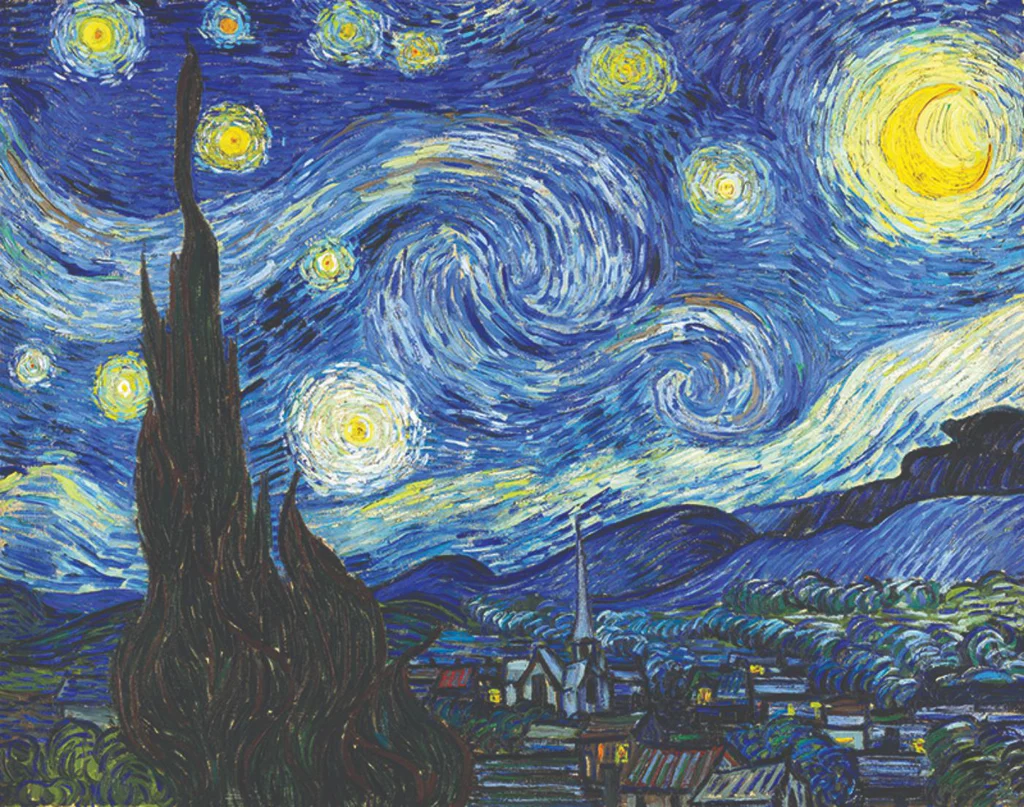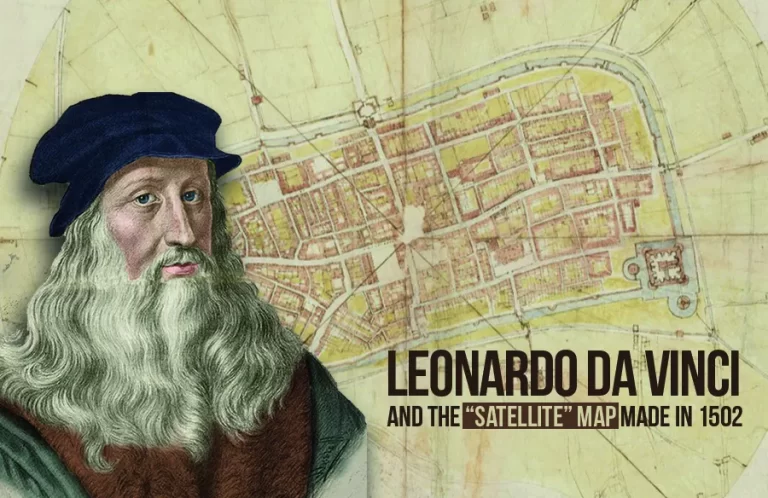Top 7 Vincent van Gogh Paintings And What Makes Them Masterpieces
Vincent van Gogh was the son of a pastor and grew up in a religious and cultured environment. He was highly emotional, lacked self-confidence, and struggled with his identity and direction in life. He believed his true calling was to preach the gospel, but it took him years to realize he was meant to be an artist. Between 1860 and 1880, when he finally committed to being an artist, van Gogh had already faced two unhappy romances and had tried working as a clerk in a bookstore, an art salesman, and even a preacher in the Borinage, a bleak mining area in Belgium, where he was let go for being too zealous.
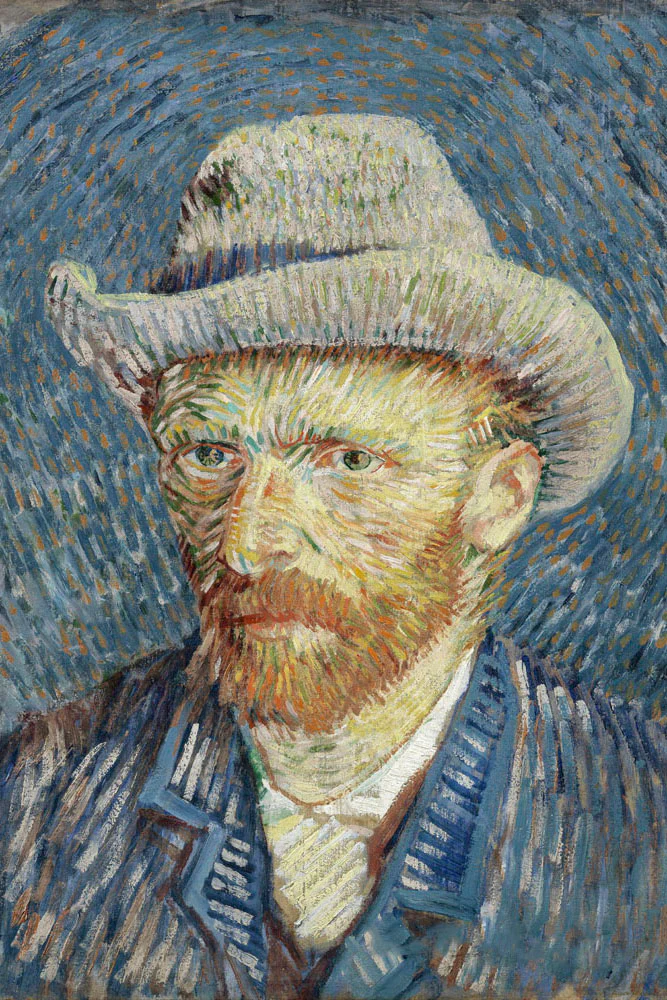
Van Gogh created many of his greatest works in less than three years, using a technique that became increasingly passionate, with vibrant colors and a sense of movement. His unique blend of form and content is powerful and dramatic, filled with rhythm and emotion. He was deeply focused on expressing his struggle with mental illness and his understanding of the spiritual essence of both humanity and nature.
Between November 1881 and July 1890, Vincent van Gogh painted nearly 900 pieces. The following excerpts are from letters he wrote about his growth as an artist. Van Gogh believed that to be a great painter, you must first master drawing before adding color. Over time, he became skilled in drawing and started to use more color. Eventually, his bold use of color became one of the most recognizable features of his paintings.
THE STORY OF STARRY NIGHT
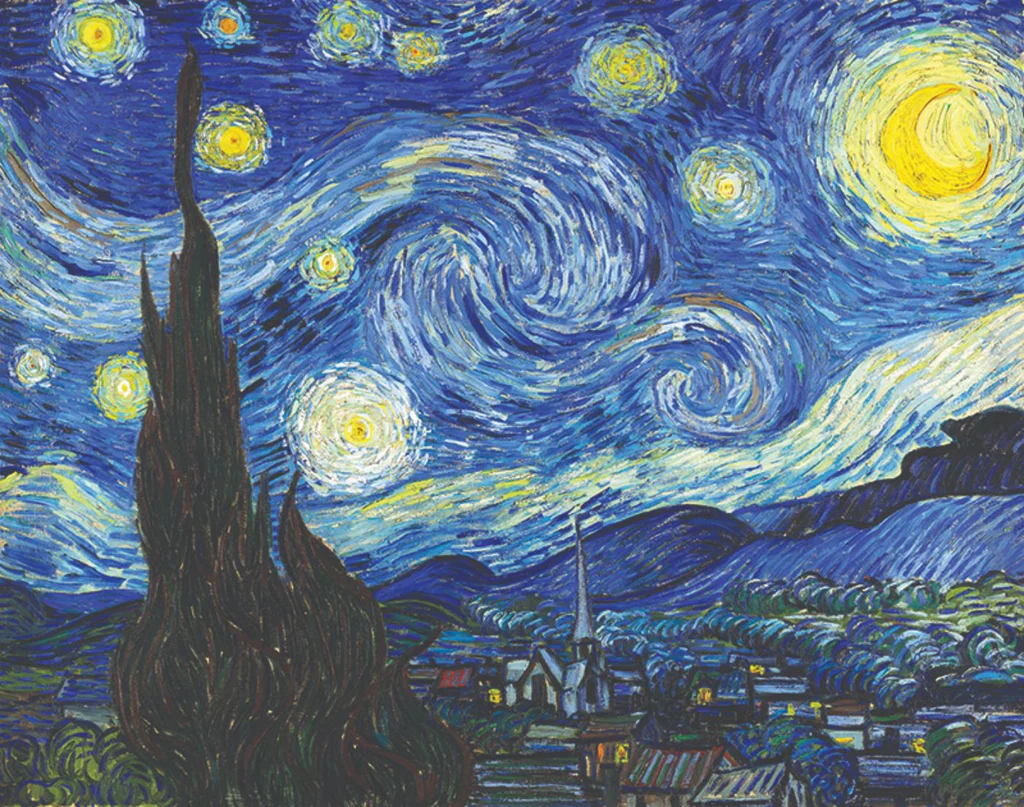
Widely regarded as Van Gogh’s masterpiece, “Starry Night” shows the view from his sanatorium room window at night, although it was painted from memory during the day.
The painting presents a dreamy interpretation of the sweeping landscape of Saint-Rémy-de-Provence. It features a cosmic scene filled with swirling stars, melting comets, and a sense of impending doom, as if Van Gogh poured his inner turmoil onto the canvas. The vastness of the night sky contrasts with the small village below, which includes clear architectural details. A few months after completing “Starry Night,” Van Gogh wrote, “I don’t know anything with certainty, but seeing the stars makes me dream.”
Blue dominates the painting, blending the hills into the sky, while the village is painted in browns and blues. Each building is outlined in black, but the bright yellow and white stars and moon stand out against the blue sky, drawing the viewer’s eye upward.
“Starry Night” captures a feeling of shock, with cypress trees, olive trees, and mountains serving as Van Gogh’s inspiration. He focused not only on the physical aspects of his subjects but also on their symbolic meanings.
“Starry Night” is now considered a pinnacle of artistic achievement. Although Van Gogh sold only one painting during his lifetime, this work has become an icon of modern art, reflecting feelings of solitude and uncertainty in our time.
SUNFLOWERS

Van Gogh’s sunflower paintings are some of his most famous works. He created them in Arles, in the south of France, between 1888 and 1889. Vincent painted five large canvases featuring sunflowers in a vase, using three shades of yellow and nothing else. Through this, he showed that it was possible to create a rich image using variations of a single color.
The sunflower paintings held special meaning for Van Gogh; he described them as a symbol of “gratitude.” He hung the first two paintings in the room of his friend, fellow painter Paul Gauguin, who lived with him for a while in the Yellow House. Gauguin was so impressed by the sunflowers that he felt they were “completely Vincent.” During his stay, Van Gogh created another version, and Gauguin later requested one as a gift.
VINCENT VAN GOGH – THE POTATO EATERS
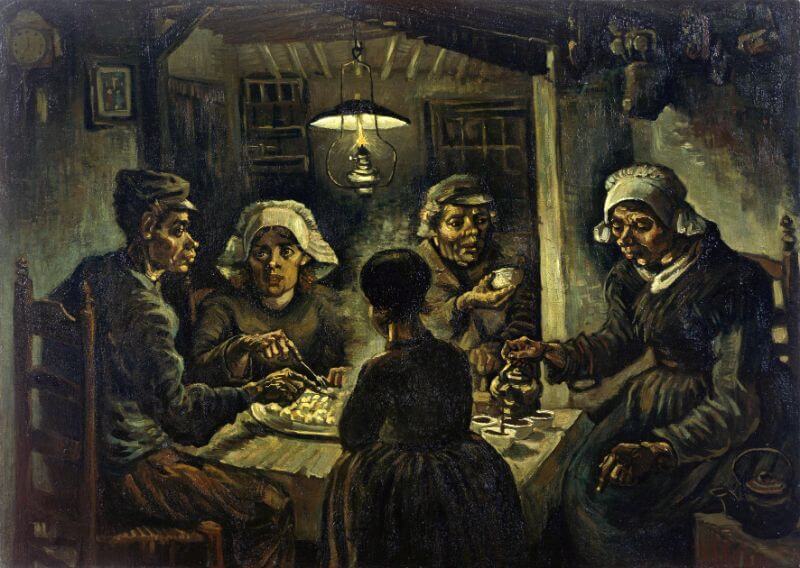
“The Potato Eaters,” completed in 1885, is often considered Van Gogh’s first major work. At this time, he had only recently started painting and hadn’t yet mastered the techniques that would later make him famous. Van Gogh viewed this painting as a showcase of his abilities, deliberately choosing a challenging composition to demonstrate his progress as a figure painter.
He aimed to depict the harsh realities of rural life, giving the peasants rough faces and bony hands to show their hard work. He wanted to convey that they “have tilled the earth themselves” and honestly earned their food. The painting features five figures seated around a square table, eating potatoes; four are women and one is a man. While the piece is dark, the mixed emotions on the faces of the figures stand out.
You may also like: Painter Leng Jun is Master of Hyperrealistic Portraits
The message of the painting was more important to Van Gogh than perfect anatomy or technique. Although he was pleased with the result, it received significant criticism for the mistakes in the figures. Nonetheless, “The Potato Eaters” has become one of Van Gogh’s most famous works.
THE STORY OF IRISES
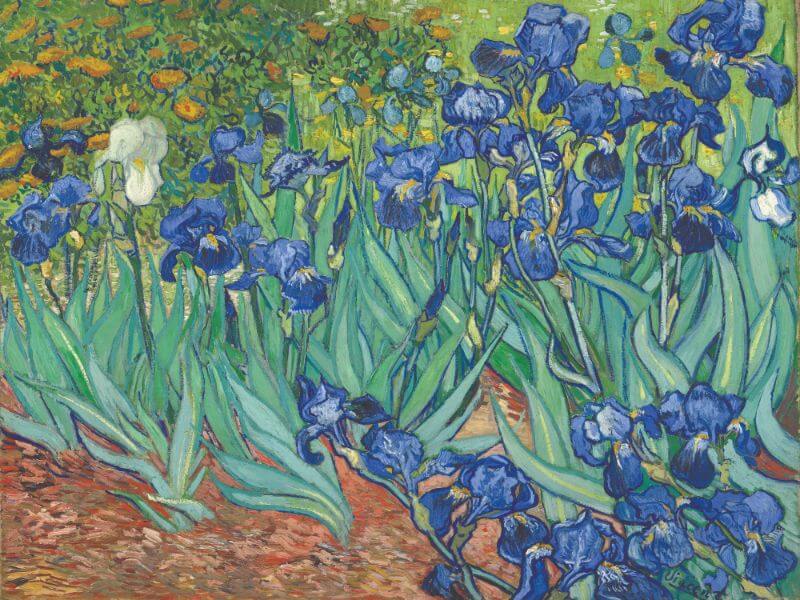
On May 8, 1889, Vincent van Gogh checked into the asylum at Saint Paul-de-Mausole in Saint-Rémy, France, after experiencing multiple hospitalizations and episodes of self-harm. During his time there, he painted around 130 pieces, drawing inspiration from the gardens and his surroundings. Notable works from this period include “The Starry Night” and “Irises.”
“Irises” may have been one of the first subjects he painted at the asylum. Created before his first major episode there, this piece shows a sense of admiration and joy, without the moodiness found in many of his later works. Van Gogh started working on “Irises” within the first week of his stay, inspired by the nature around him. The painting was likely influenced by Japanese woodblock prints, which began to gain popularity in the 17th century, and Van Gogh, like many artists of his time, was inspired by these works.
Unlike Impressionist flower paintings that often depict plants as formless blobs of color, Van Gogh’s “Irises” are carefully studied for their shapes. Each flower is unique, reflecting the same sincerity and precision found in his portraits. He explores a variety of curved lines, creating movement and avoiding a static repetition of the same design. These dynamic, swirling lines in “Irises” hint at the more expressive works he would create later in Saint-Rémy.
VINCENT VAN GOGH’S BEDROOM
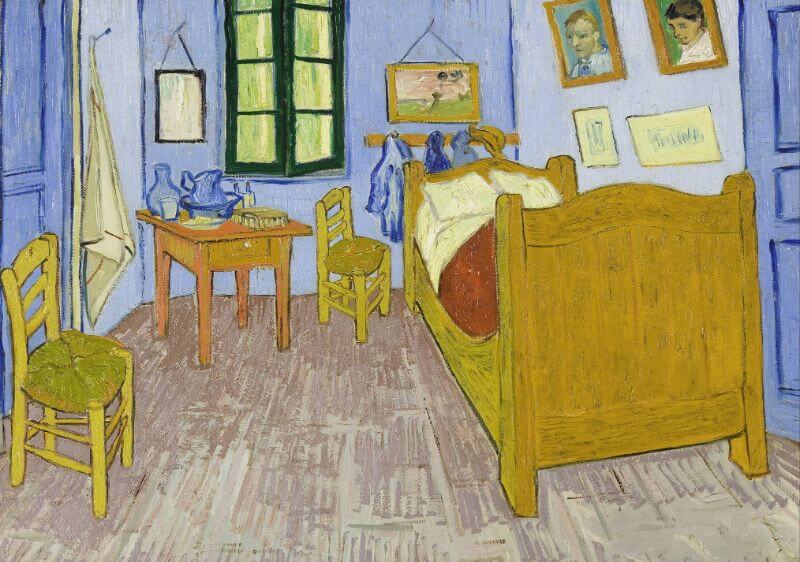
Throughout his career, Van Gogh painted everything around him, from landscapes and townspeople to even his own shoes. In “Bedroom in Arles,” he depicts a room in his house, known as the Studio of the South, which represented his artistic vision. He painted this bedroom with excitement and hope, preparing to welcome his friend and fellow artist.
As you enter the room, you see a bed on the right, a chair along the wall, a table with water, and a window overlooking the street. On the left wall, there’s another chair and a door leading to a second bedroom.
“Bedroom in Arles” showcases Van Gogh’s understanding of color theory, using oranges against blues, and reds with greens. Inspired by Japanese prints, he chose to omit shadows from the painting. This lack of shadows, combined with the unusual perspective, makes some objects look as if they are leaning or falling. This effect isn’t just due to haste or lack of skill; the angle of the far wall causes the furniture not to align properly.
In October 1888, Van Gogh wrote to his brother Theo about this painting, explaining that because the subject matter was simple, the colors needed to carry the painting’s meaning. He wanted “Bedroom in Arles” to evoke a sense of calm, helping viewers feel at ease and letting their imaginations rest.
ALMOND BLOSSOMS – VINCENT VAN GOGH’S MASTERPIECE
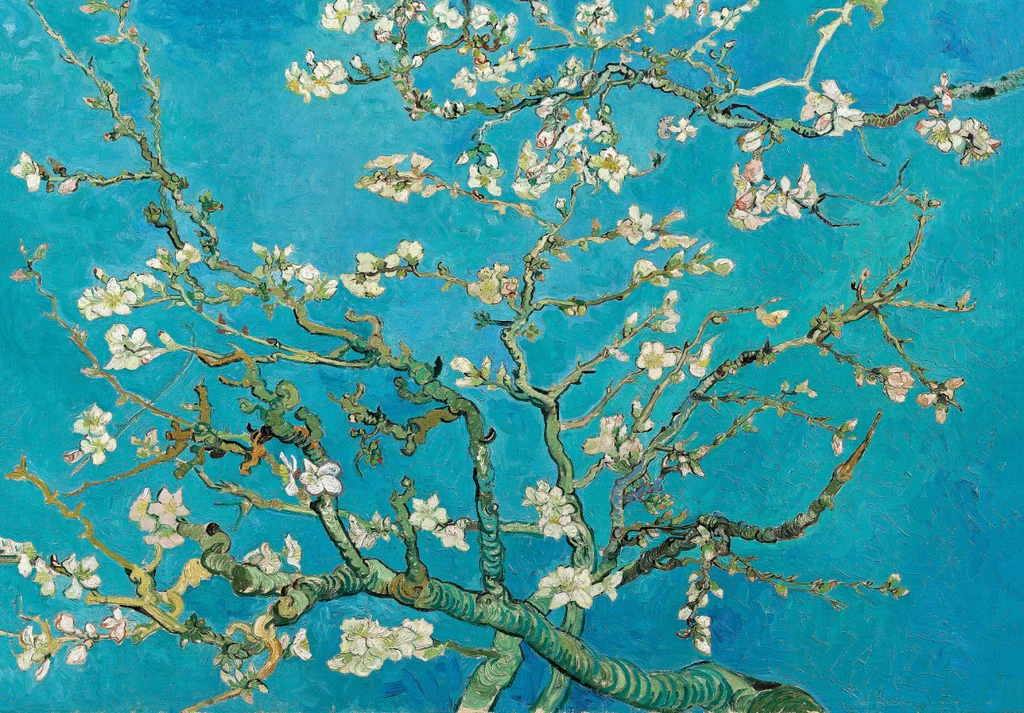
Van Gogh’s painting “Blossoming Almond Tree,” also known as “Almond Blossoms,” reflects his thoughts on rebirth. The large branches filled with blossoms against a blue sky were a recurring theme for him, as almond trees bloom early, symbolizing new life. Van Gogh drew inspiration for this composition from Japanese printmaking, using bold outlines and unique positioning.
This painting was a gift for his brother Theo and sister-in-law Jo, who had just welcomed a baby boy named Vincent Willem. In his letter announcing the birth, Theo wrote that they named the baby after Vincent and wished for him to be as determined and courageous as his namesake. It’s no surprise that this painting held a special place in the hearts of the Van Gogh family.
Vincent Willem later went on to establish the Van Gogh Museum. In May 1890, after leaving the asylum in Saint-Rémy, Vincent visited his family and brought along the almond tree painting. Sadly, his mental health continued to decline, and he passed away less than three months later in the summer of 1890.
CAFE TERRACES
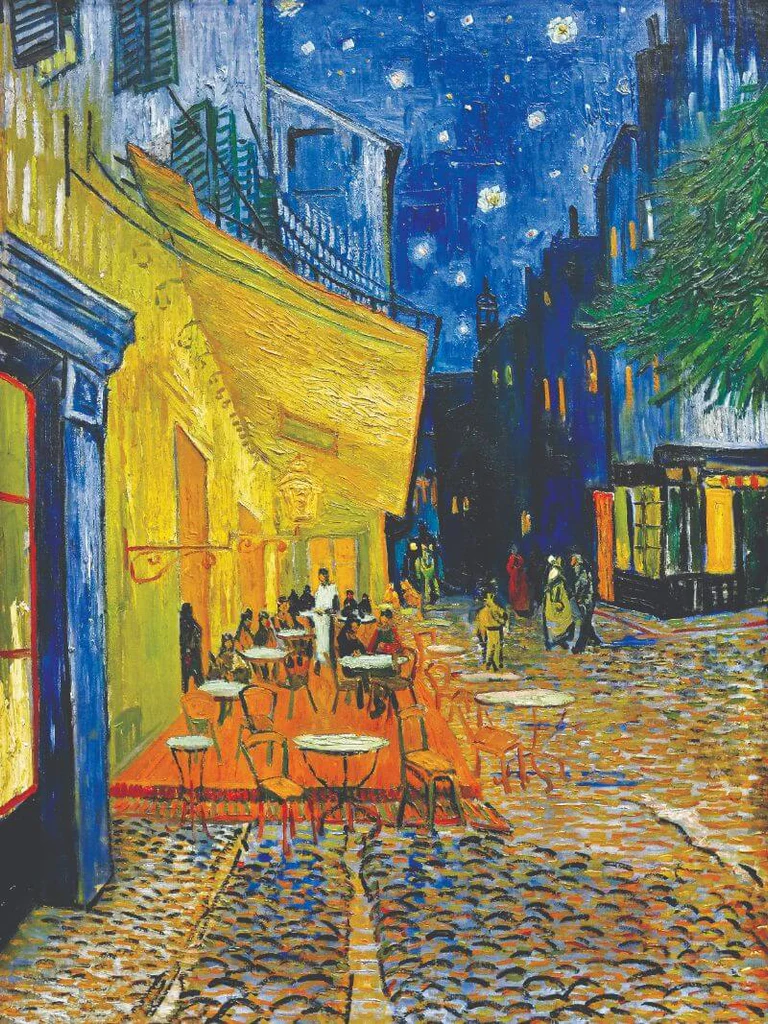
Van Gogh wanted to create a night painting for a long time, but he didn’t want to use the typical blacks and grays. Instead, he used vibrant colors to depict a gas-lit café terrace in Arles at night, capturing how colors change from day to night. By using contrasting colors, he created a glowing effect that seems to shine against the darkening sky.
The lines in the painting draw the viewer’s eye toward the center, making it feel like you’re walking along the cobblestone streets. The café he painted still exists today and has become a popular spot for Van Gogh fans visiting southern France. In a letter to his brother, he described the painting, saying, “Here you have a night painting without black, using beautiful blues, violets, and greens, with the lit areas in pale yellow and citron green. It amuses me enormously to paint the night right on the spot.”
Van Gogh loved the way the gaslight, which is yellow and orange, intensified the blues in his painting. He painted directly from his observations at night, a technique he learned from the Impressionists. However, he didn’t just capture what he saw; he infused the painting with his feelings and personal experiences, reflecting the excitement and joy he felt while creating it.
